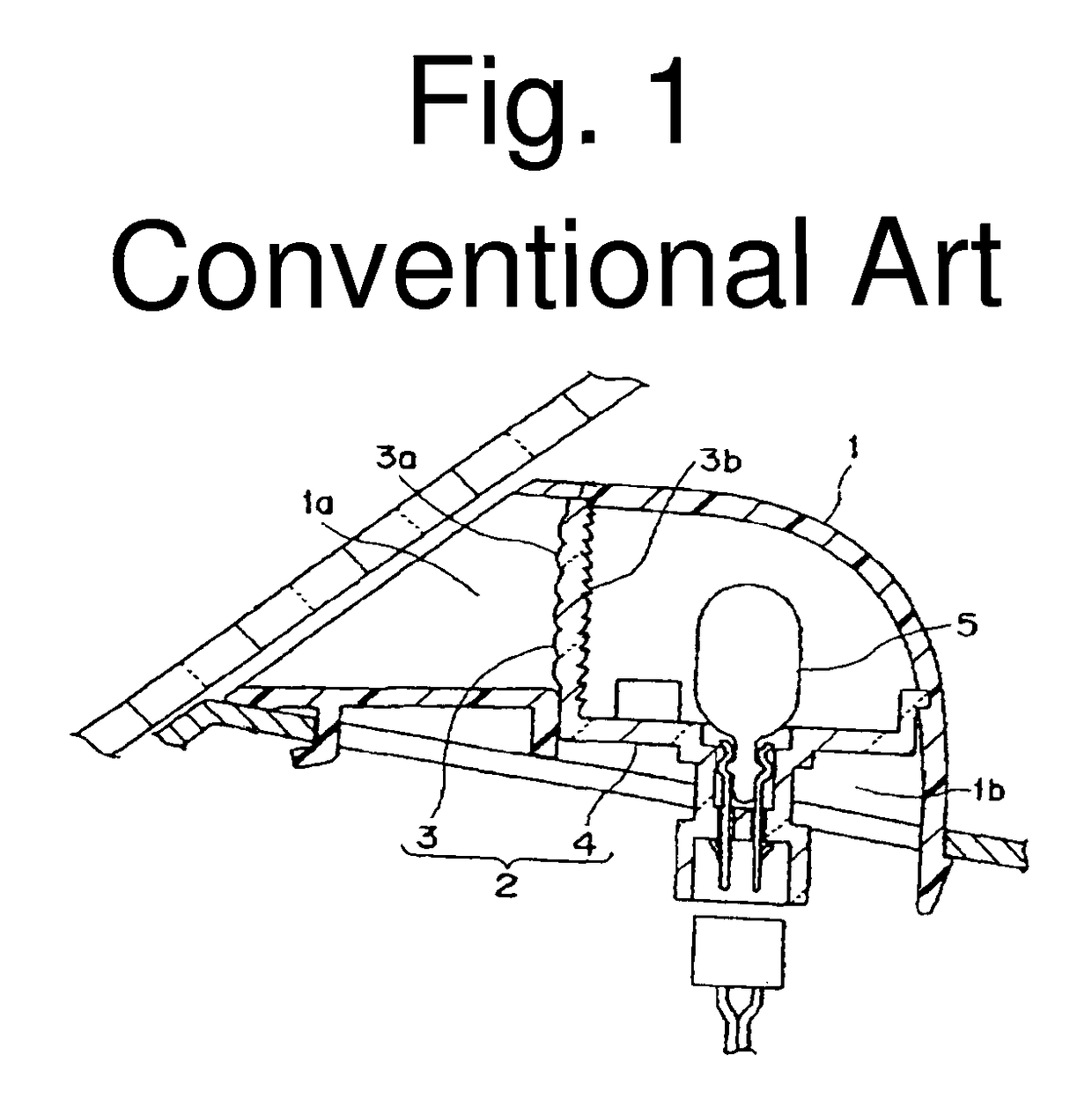Optical lens and vehicle lighting device using the same
a technology of optical components and optical lenses, applied in the field of optical lenses, can solve the problems of not being able to provide a crystalline-like reflection state, vehicle light having these optical components may inevitably have a larger depth-wise dimension, and not allowing for the diffusion and distribution of light to produce the desired light distribution pattern, etc., to achieve the effect of enhancing commercial value, reducing costs, and improving light utilization efficiency
- Summary
- Abstract
- Description
- Claims
- Application Information
AI Technical Summary
Benefits of technology
Problems solved by technology
Method used
Image
Examples
Embodiment Construction
[0034]A description will now be made below to optical lenses of the presently disclosed subject matter with reference to the accompanying drawings in accordance with exemplary embodiments. In the described exemplary embodiments, a description will be given of an optical lens for use as a day-time-running vehicle light as one example, but the presently disclosed subject matter is not limited to this.
[0035]FIG. 2 is a perspective view illustrating a light incident surface of an optical lens for a vehicle light, and FIG. 3 is a perspective view illustrating a light output surface for the optical lens of FIG. 2. FIGS. 4A to 4D are a top plan view, a front view, a right side view and a rear side view of the optical lens of FIG. 2, respectively. FIG. 5 is a cross sectional view illustrating the optical lens taken along line A-A′ as shown in FIG. 4B. FIG. 6 is a cross sectional view illustrating the optical lens taken along line B-B′ as shown in FIG. 4B. FIG. 7 is a perspective view illust...
PUM
 Login to View More
Login to View More Abstract
Description
Claims
Application Information
 Login to View More
Login to View More - R&D
- Intellectual Property
- Life Sciences
- Materials
- Tech Scout
- Unparalleled Data Quality
- Higher Quality Content
- 60% Fewer Hallucinations
Browse by: Latest US Patents, China's latest patents, Technical Efficacy Thesaurus, Application Domain, Technology Topic, Popular Technical Reports.
© 2025 PatSnap. All rights reserved.Legal|Privacy policy|Modern Slavery Act Transparency Statement|Sitemap|About US| Contact US: help@patsnap.com



